One unfortunate axiom in communications work is: if it bleeds, it leads. Another might be: a divider is a headliner.
We have seen this at play throughout the news coverage and social media conversations of the Covid-19 pandemic. Countless examples of unity, community, and mutual understanding in the face of tragedy have been overshadowed by a louder, stickier story of insurmountable divisions. One of the biggest stories has pitted the vaccinated against the unvaccinated as a lens to explain everything else.
But if we take a step back and think about our own friends, family, coworkers, and neighbors—and even ourselves over time—we remember that people in real life are never so simple. Stories from our partners on the ground and national survey data offer us far more helpful insight.
Binaries do not hold up
Public health communicators and community-based organizations on the frontlines of the pandemic, including our grantees through the Equity-First Vaccine Initiative, know this first hand. Their tireless work to understand community members’ specific questions about safety and health guidance—and then to meet their unique and individual needs—has revealed a kaleidoscope of ways people have thought about the pandemic and public health. And our partners’ success has been in meeting those people where they are, at different points on their journey. Their work has strengthened communities along the way.
Ultimately, “A vs. B” binaries continue to be a pitfall, whether in our personal conversations or our public health communications. In reality, there is almost always a story we share, and there are far more than two opposing sides to the story.
The details are in the data
What we’ve heard from partners on the ground has been reaffirmed by the sixth and final wave of research we’ve commissioned from Hattaway Communications since the fall of 2020.
Firstly, despite prominent media coverage of controversy and even despair around national divisions, most people have been doing most public health measures most of the time. And going a step beyond: a majority of people plan to keep doing so. For example, 92% of people said they will continue at least one safety measure from the pandemic for the long term. And 60% of people said they will continue wearing a mask in crowded places, which is especially remarkable given how new this was—and even actively discouraged—less than two years ago. Public health communicators made an impact. Major messages got through. The full suite of self-protective measures remains critical.
We need to pay attention to new patterns in attitudes and behaviors.
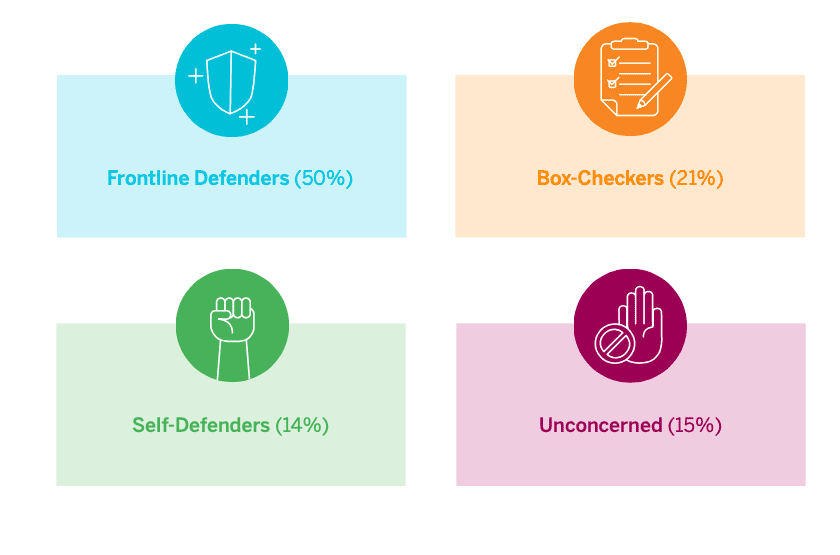
Importantly, the binary of vaccination status was not an indicator for various attitudes, leading us to explore current attitudes and motivations with more nuance. Maybe we should not have been surprised. In a way, the variety of ways people have learned about and engaged with personal and public health reflects the whole new combinations of attitudes and behaviors
Our research analysis produced four audience profiles, or psychographics, that give us new ways of thinking about who we’re talking with and to at any given time.
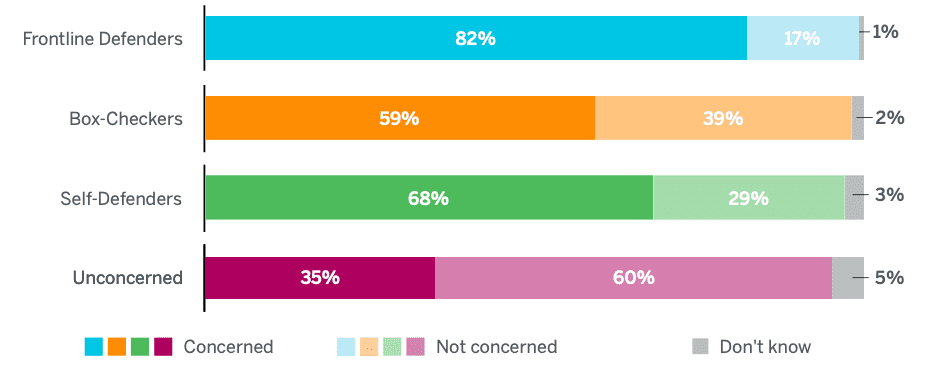
Frontline Defenders
Frontline Defenders follow public health guidance and feel confident in their ability to do so. They are vaccinated, willing to get tested, and are following the Covid-19 guidance to mitigate risk to themselves and others.

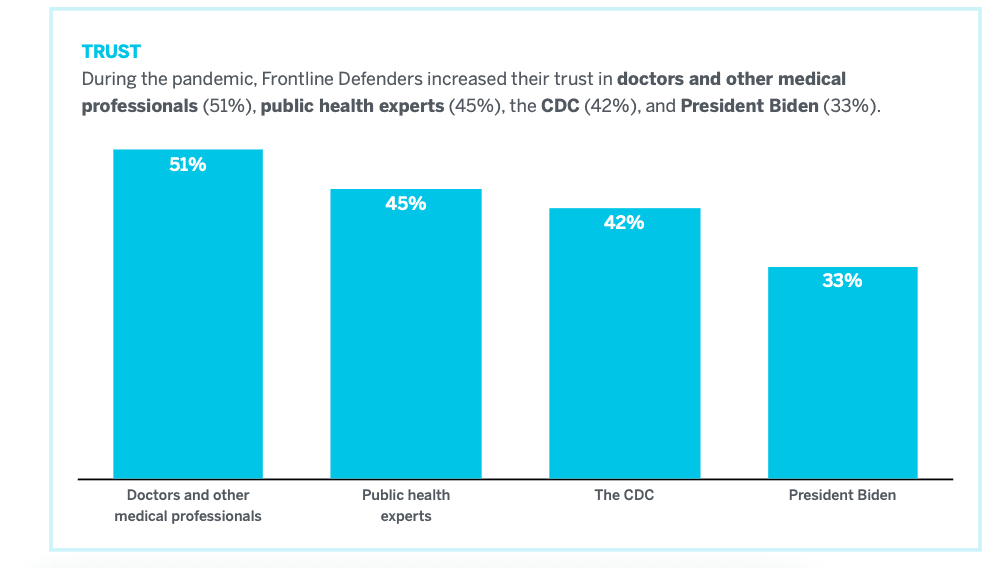
Box-Checkers
Box-Checkers are vaccinated, but less likely to adopt Covid-19 guidance like testing and mask-wearing. This group is ready for the pandemic to be over and go back to their normal lives.
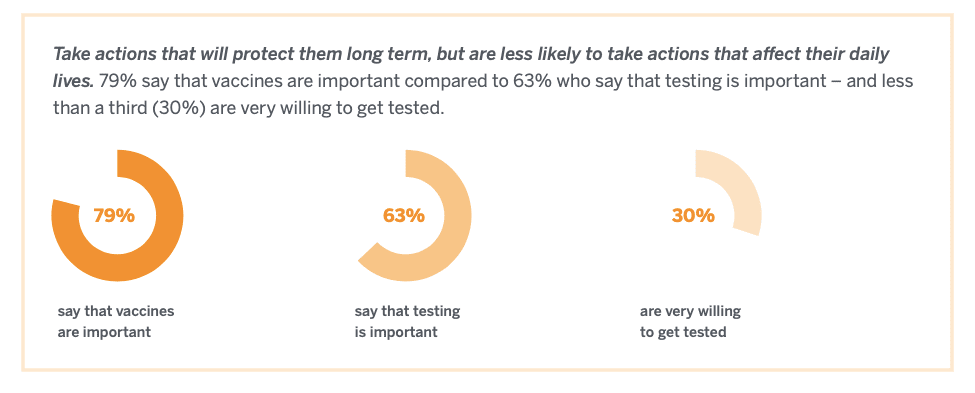
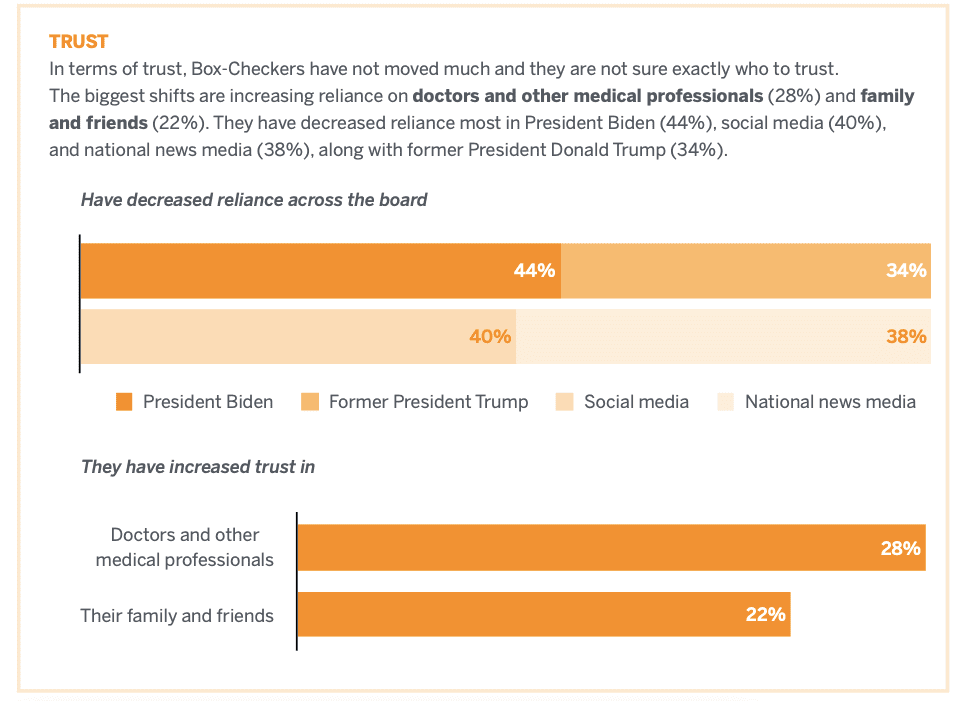
Self-Defenders
Self-Defenders are more likely to get tested, wear a mask, and take additional precautions compared to Box-Checkers. They appear to be absorbing public health guidance and continuing to adopt risk-averse practices into their daily lives—except for getting vaccinated.

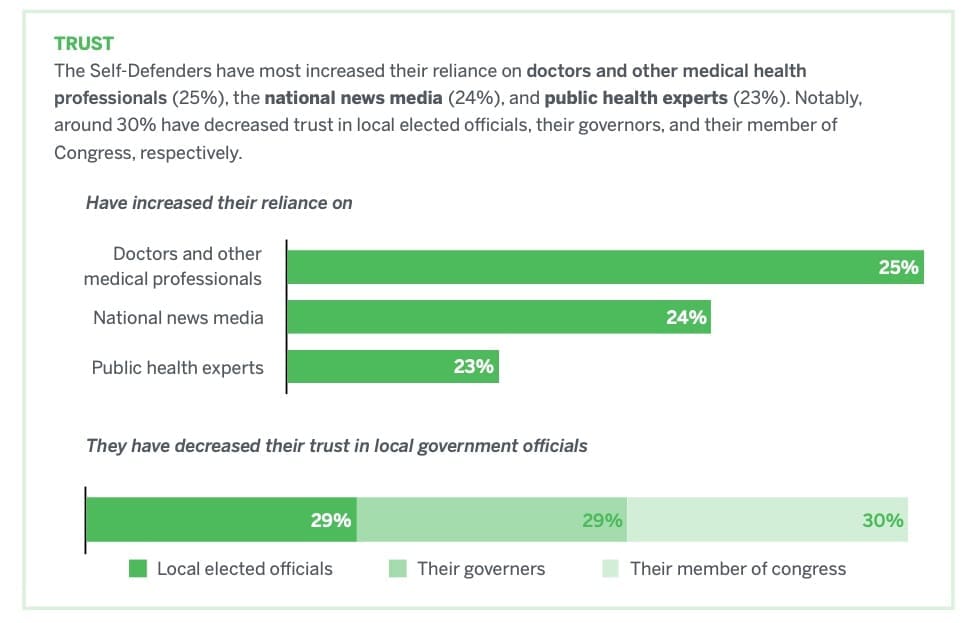
Unconcerned Americans
Unconcerned Americans are unvaccinated and still have many concerns about doing so. In many ways, they have checked out of the pandemic and are much less likely to be informed on or follow Covid-19 guidance like getting tested and wearing a mask. They also have a hard time knowing who to trust.
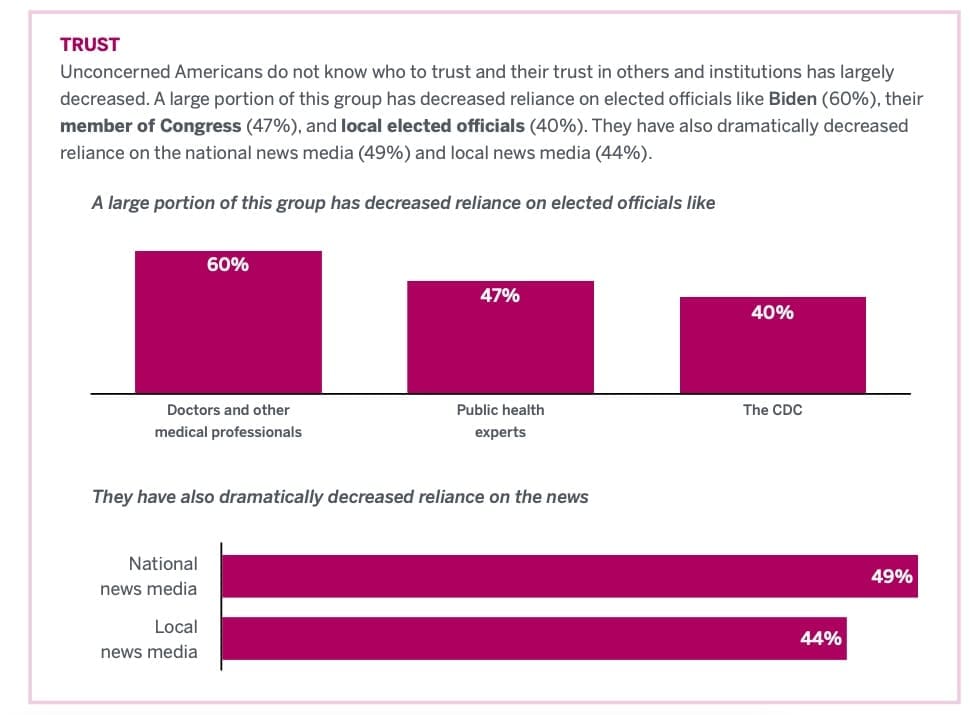

Better understanding supports better communications.
Binaries are both incomplete and unhelpful in planning communication. They are built on assumptions about audience motivations, making a difficult job unnecessarily harder. But a clear-eyed view on who people are and where they stand helps communicators connect with them instead of missing the mark entirely. The data has offered us new ways to question how our audiences and local communities think and feel so that we don’t have to rest on tired tropes.
There’s a proverbial, dreaded dinner table debate where two sides spar against each other but never reach resolution. Maybe it’s because we always have more in common, and even more nuances of thought, than loudly proclaimed binaries lead us to believe. They don’t tell the story, and now is the time for us to push back for good.
Read more about Hattaway’s research and messaging guidance and watch the presentation to the STAT Communications Community of Practice on March 9th, both below.
- Report
Lessons from the Covid-19 Pandemic for Future Public Health Communications
In the early months of 2020, society was on the brink of unimaginable change. Covid-19 was about to radically recast Americans’ understanding of society, science, and safety. As we enter the third year of this pandemic, the question before us is: What have we learned? And how do we move forward? Since September 2020, The […]Download PDF
Related Updates
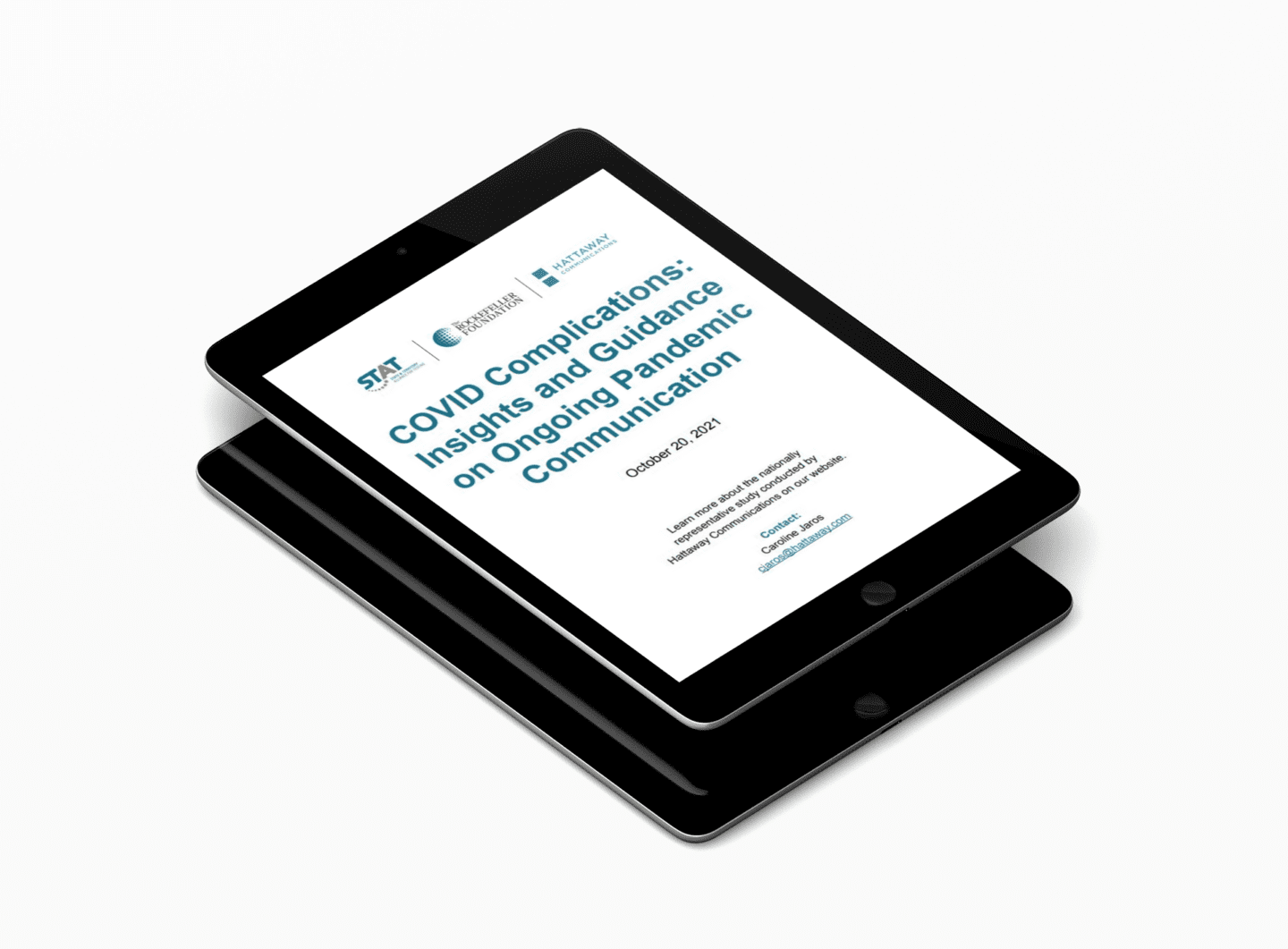
Insights and Guidance on Ongoing Pandemic Communication Wave 5 Survey Results
Since September 2020, The Rockefeller Foundation has commissioned Hattaway Communications to conduct quantitative and qualitative surveys on Americans’ attitudes towards Covid-19 actions, addressing testing, vaccines, incentives, and mandates. This nationally representative survey, the fifth wave in the series, was fielded the morning after President Biden announced his vaccine plan with its focus on expanding mandates. […]
More